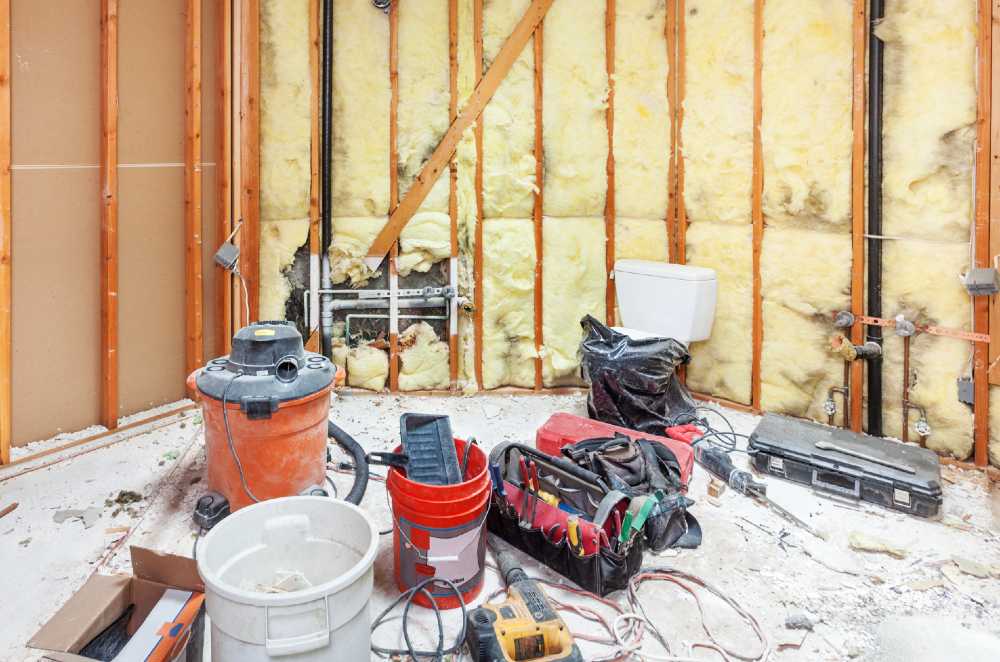When it comes to flooding, most people worry about damage to their possessions, furniture, appliances, or maybe even their carpeting. Water damage to their walls usually falls pretty low on the list. However, you should think about your walls and studs. Depending on how much water there is and how long it sits, it could cause your wall studs to sag or even crumble. With enough damage, it could leave your home unsafe. For that reason, we look at how to clean wall studs after a flood.
How Floods Damage Your Walls and Studs
Floodwaters will soak into walls, causing them to swell and crumble. Eventually, the water will soak into wooden wall studs as well. As the wood swells, the weight of your home pushes them down.
The damage gets worse the longer the wall studs stay wet. Although it’s unlikely a flood could cause your home to collapse, it is one potential outcome. Cracked walls, mold, and smells are much more likely.
Wall cracks may occur weeks or even months after the flood, as walls studs dry and settle after the water damage. Mold and smells will usually develop within a week but can get worse over time.
Other signs of wall damage are sagging walls and peeling paint or wallpaper. The floor above the damaged area may creak or sag as well. If you see signs of wall damage after a flood, inspect the area and replace damaged studs.
How Do You Clean Studs After a Flood?
The best way to prevent structural damage after a flood is to clean and dry studs immediately. Depending on how comfortable you are with home improvement, you can repair flood damage on your own.
- Pump Out the Floodwater – Start by removing the floodwaters. Use a pump to get rid of the water as quickly as possible.
- Remove Damaged Materials – Then throw away damaged materials, including walls that have already fallen apart or are crumbling.
- Check Walls and Studs for Damage – Check walls for damage. If they are wet, make small cuts to see if the studs are damaged as well. If the studs are wet, cut away the drywall so you can dry them.
- Dry the Structure of Your Home – Use fans and dehumidifiers to dry the structure of your home quickly. Depending on the extent of the damage, it may take days or even weeks to dry the wall studs.
- Clean With Soap and Water – If the water contained mud or dirt, clean the damaged area with soap and warm water. In extreme cases, do this before or while drying the walls.
- Disinfect and Deodorize – To prevent mold and odors, disinfect with a bleach solution and allow it to air dry. Then sprinkle the area with baking soda and vacuum it up the next day.
- Rebuild Damaged Walls – Install new drywall as necessary. For the best results, use a moisture meter to ensure wall studs are completely dry before hanging new drywall.
Water damage after a flood? Call 1-888-787-0898 now for a free quote on flood damage cleanup services.





